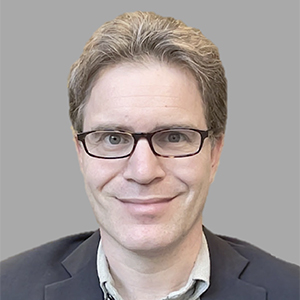Granular matter is very common – sands, soils, raw materials, food stuffs, pills, powders – but the challenge of predicting the motion of a collection of flowing grains has proven to be a historically difficult one, from both computational and theoretical perspectives. Grain-by-grain discrete element methods can be used, but these become computationally unrealistic for large systems and long times. A broadly accurate continuum model would be ideal as it could provide a much faster means of calculating flows and stresses in real-world problems. However, identifying a continuum model is quite challenging due to the many peculiar behaviors of granular flows, behaviors which are often attributed to the finite size of the constituent grains.

Kenneth Kamrin,
UC Berkeley
Here, we will discuss a nonlocal continuum approach for granular flow known as Nonlocal Granular Fluidity (NGF), which has been developed over the recent years. The model emphasizes the key importance of cooperativity in the granular flow process through the inclusion of a grain-size-dependent length-scale within the rheology. It has been shown to produce quantitatively accurate flow solutions in many experiments across several different families of geometries. It also simultaneously reconciles a number of unusual behaviors displayed by granular media, such as the motion-induced “quicksand” effect, wherein flow at one location effectively removes the yield stress everywhere, and the observation that thinner zones of material behave as if they are stronger, as in hopper clogging. The success of the NGF model has hastened the desire to put its physical origins on firmer ground. We can now show that the model’s key state variable, the granular fluidity field, is tied directly to particle velocity fluctuations. Through analyses of flows, stresses, and fluctuations in numerous systems, it is clear that the nonlocal mechanism at play in granular flows emerges as the result of a rheology that is highly sensitive to tiny fluctuations combined with “self heating” — flow-generated fluctuations diffusing over a grain-based length-scale.
Ken Kamrin received a bachelor of science in engineering physics with a minor in mathematics at UC Berkeley in 2003, and a PhD in Applied Mathematics at MIT in 2008. Kamrin was an NSF Postdoctoral Research Fellow at Harvard University in the School of Engineering and Applied Sciences before joining the Mechanical Engineering faculty at MIT in 2011, where he was appointed the Class of 1956 Career Development Chair and later received a second faculty appointment in Applied Mathematics. After 13 years as a professor at MIT, Ken joined the UC Berkeley mechanical engineering faculty in 2024. Kamrin’s research focuses on constitutive modeling and computational mechanics for large deformation processes, with interests spanning elastic and plastic solid modeling, granular mechanics, amorphous solid mechanics, and fluid-structure interaction. Kamrin’s honors include the 2010 Nicholas Metropolis Award from APS, the NSF CAREER Award in 2013, the 2015 Eshelby Mechanics Award for Young Faculty, the 2016 ASME Journal of Applied Mechanics Award, and the 2022 MacVicar Faculty Fellowship from MIT. He sat for three years on the Board of Directors of the Society of Engineering Science and serves as an associate editor for the International Journal of Solids and Structures, Granular Matter, and Computational Particle Mechanics.